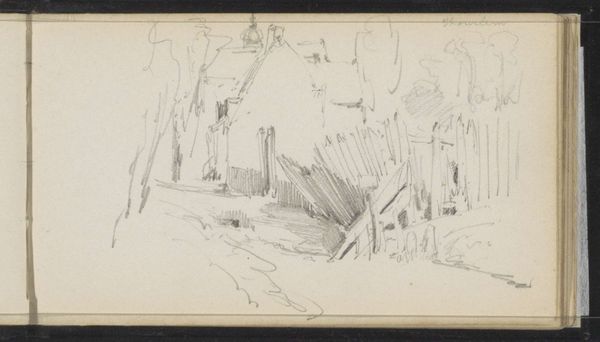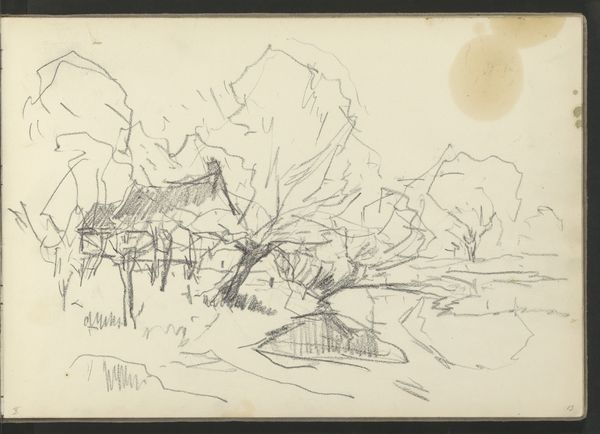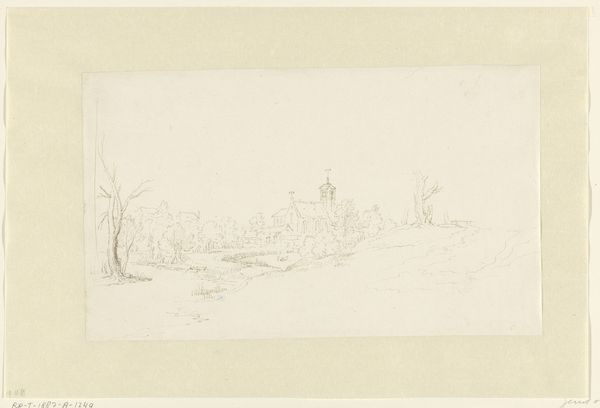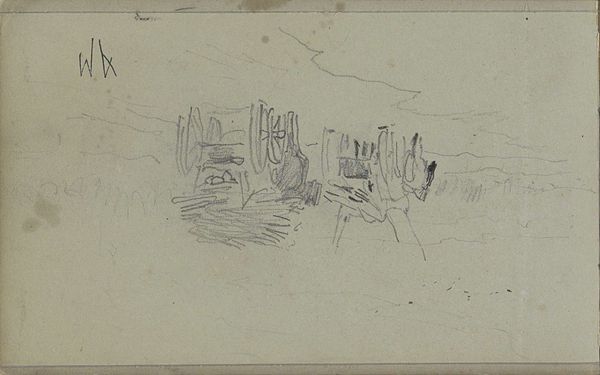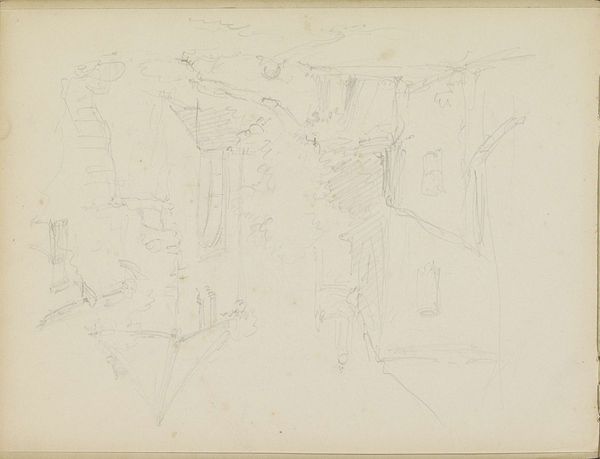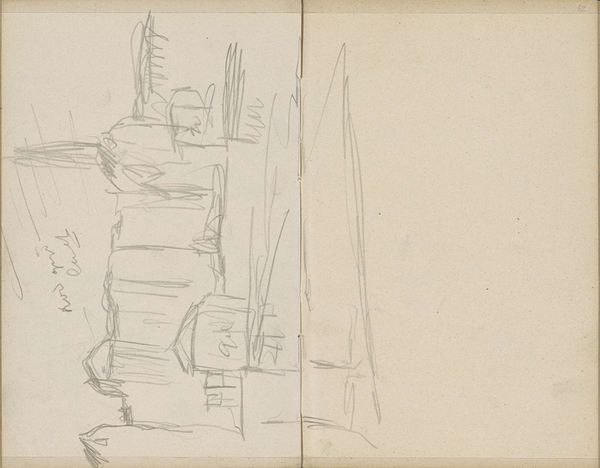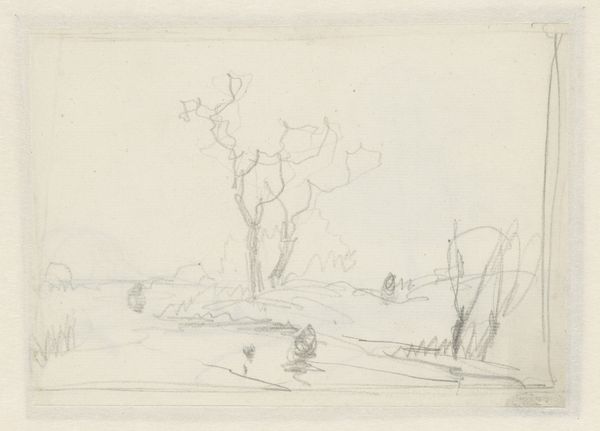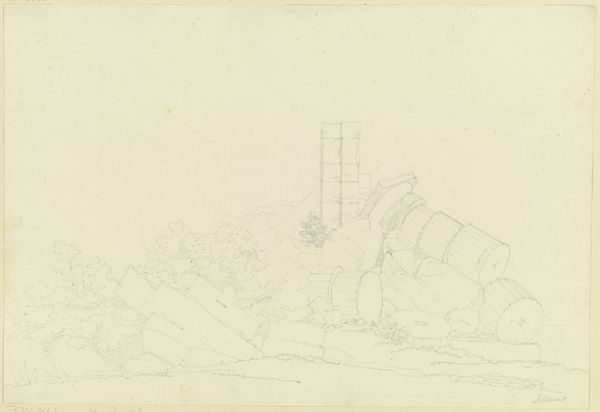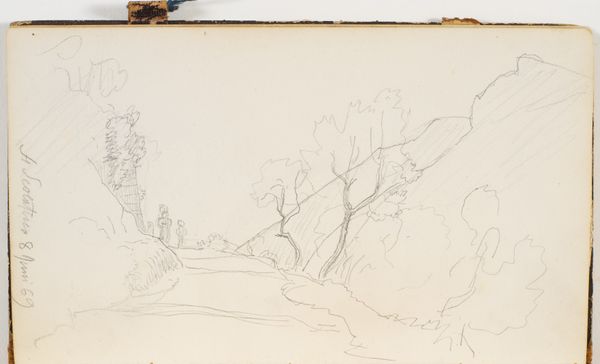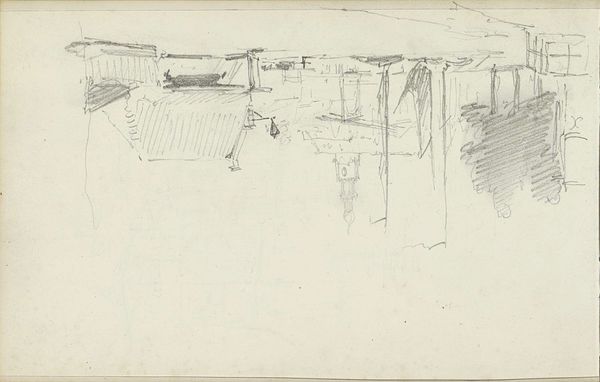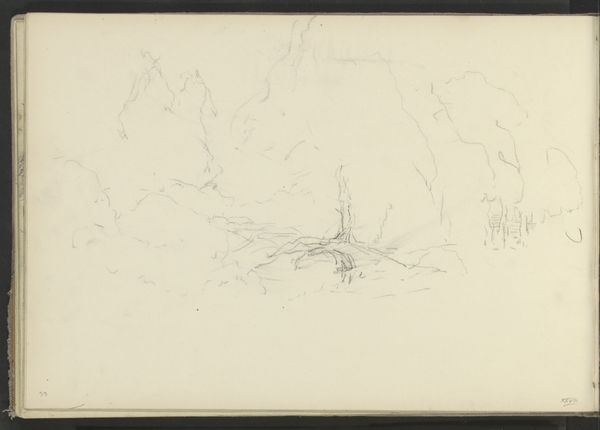
drawing, paper, pencil
#
drawing
#
16_19th-century
#
landscape
#
etching
#
paper
#
romanticism
#
pencil
Copyright: Public Domain
Curator: August Lucas created this intriguing landscape study, "Baumgruppe und Gatter bei Frascati, im Hintergrund Gebäude," in 1834. The materials? Pencil on paper. Editor: It’s remarkably subtle. The subdued pencil work almost mutes the scene, giving it a serene, almost melancholy quality. It feels like looking at a memory. Curator: I agree. Considering the social and economic conditions of 19th-century art production, a drawing like this suggests accessibility in materials and creation. No elaborate studio needed. It speaks to the democratization of art-making to some extent. What we see is more than just a pretty rendering but a study. Editor: That is definitely a valid point, yet this approach seems inherently aligned with the period's focus on picturesque motifs—notice the way the wooden gate guides our eye? Did Lucas’s affiliation to Romanticism reflect the expanding middle class of that time and the increasing accessibility of landscape paintings to wider audiences? Curator: Possibly. But consider also the paper itself—its production, distribution. Was it locally sourced in Frascati or imported? The materials themselves hold histories. Examining the availability and trade routes of drawing paper would also reveal insights. The Staedel Museum's role is central to ensuring we understand not only aesthetic appreciation but also this more profound analysis of materiality, availability and access. Editor: I'm persuaded that this work serves more than a material exercise: the delicate lines, and how the buildings in the back seem to disappear. These were visual cues that supported a powerful artistic status, reinforcing ideals tied to the picturesque in contrast to expanding urban centers. Curator: And yet, doesn't its fragility point toward a certain level of disposability too? Pencil drawings on paper lack the prestige and permanence of an oil painting, and the labour is different. Was it meant for public display, or merely personal exploration? That's what really motivates my research: What does the labor speak of and say? Editor: That distinction of labour opens many questions around Romantic ideals. I can now see why these artistic choices reflected Lucas' cultural perception and values too. It goes to prove art's profound impact and significance. Curator: Agreed. Ultimately, it's a starting point for appreciating both its aesthetic qualities and its position within a network of production and consumption.
Comments
No comments
Be the first to comment and join the conversation on the ultimate creative platform.

